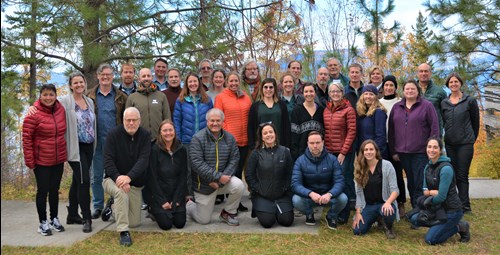Publications & Workshops
Publications & Workshops
Peer-reviewed Publications
*Transboundary policy and science team members
Policy Engagement
- Testimony to Alaska State House Fisheries Committee, remotely presented to Juneau, Alaska, 27 April 2021. Monitoring the health of rivers shared by Alaska and British Columbia.
- Testimony to Alaska State House Fisheries Committee, Juneau, Alaska, 30 April 2019. Assessing mining impacts in our shared Alaska-British Columbia rivers.
- Alaska Legislative Lunch and Learn Presentation, Juneau, Alaska. 15 March 2019. Transboundary Mining update.
- Testimony to Alaska State House Fisheries Committee, Juneau, Alaska. 18 February 2019. Thank you for supporting wild salmon and science.
Technical Reports
Sergeant, C. J., and J. Caldwell (2021) Monitoring mining impacts and ecosystem change in the Tulsequah River: external program review.
Taku River Tlingit First Nation, Lands, Resources, and Fisheries (2020) Monitoring mining impacts and ecosystem change in the Tulsequah River: Interim summary of October 2019 field sampling results. In partnership with C. J. Sergeant, Flathead Lake Biological Station, University of Montana.
Sergeant, C. J., M. R. Bower, A. Cyr, and W. F. Johnson. 2018. Environmental contaminants monitoring protocol for the National Park Service, Southeast Alaska Inventory and Monitoring Network: Version EC-2018.1. Natural Resource Report NPS/SEAN/NRR—2018/1768. National Park Service, Fort Collins, Colorado.
Sergeant, C. J. 2018. Data quality standards for environmental contaminants monitoring in the Southeast Alaska Network: Version EC-2018.1. Natural Resource Report NPS/SEAN/NRR—2018/1770. National Park Service, Fort Collins, Colorado
Media in the transboundary Alaska/ BC region:
Media in the transboundary Kootenai(ay) Basin:
Mining and Watersheds (2019)
During late October 2019, the University of Montana’s Flathead Lake Biological Station hosted a workshop titled, Advancing scientific knowledge of mining impacts on salmonid-bearing watersheds.
Thirty-nine science and policy experts from academic institutions, state/provincial and federal agencies, indigenous governments, and non-governmental organizations gathered to participate in the collaborative workshop. Those in attendance included representatives from Alaska, Idaho, Montana, Washington, British Columbia, and Ontario.
Read the full workshop blog post here.

This web page will serve as the repository for information produced from the workshop and future related products. Workshop products below will be hyperlinked as they become available:

